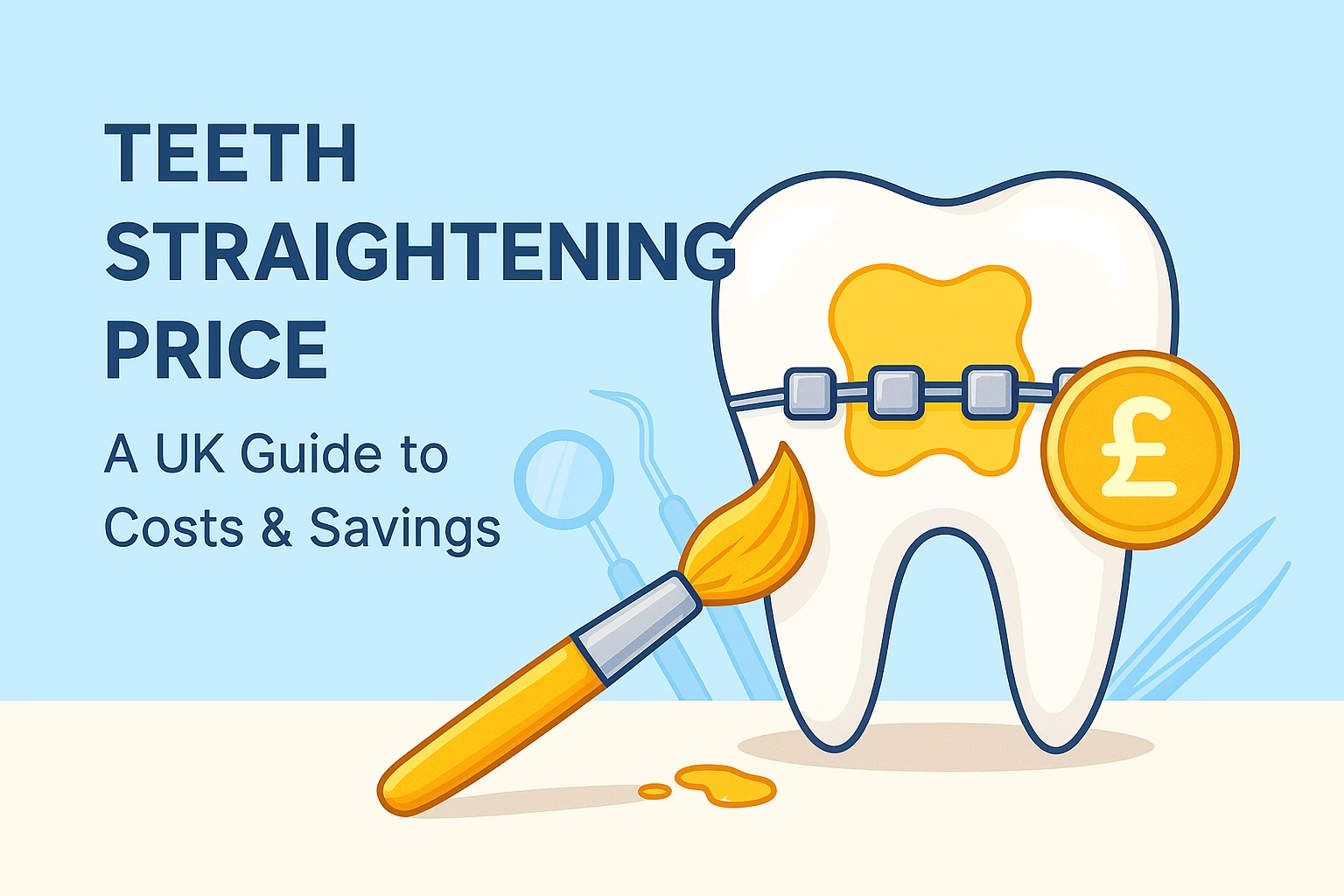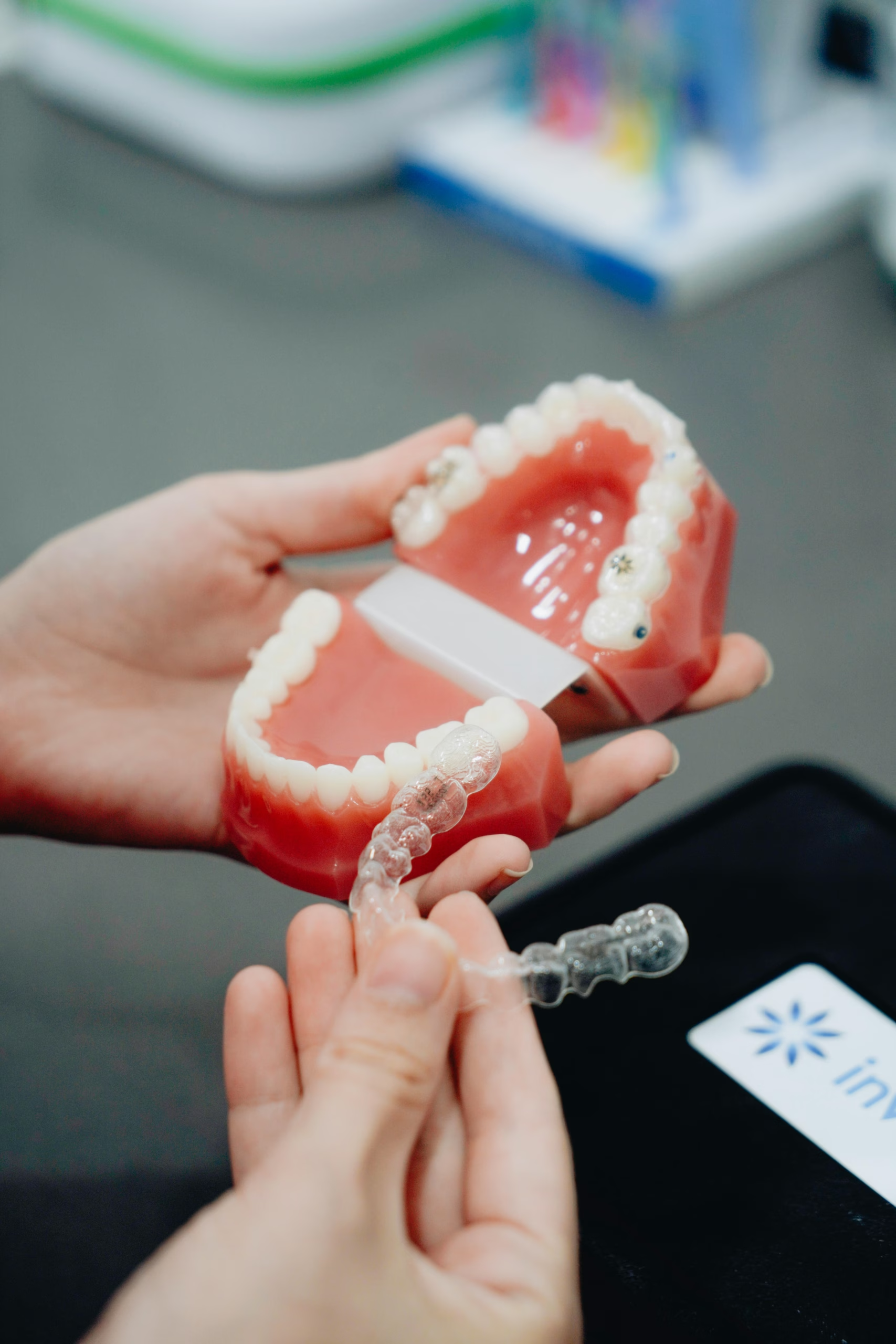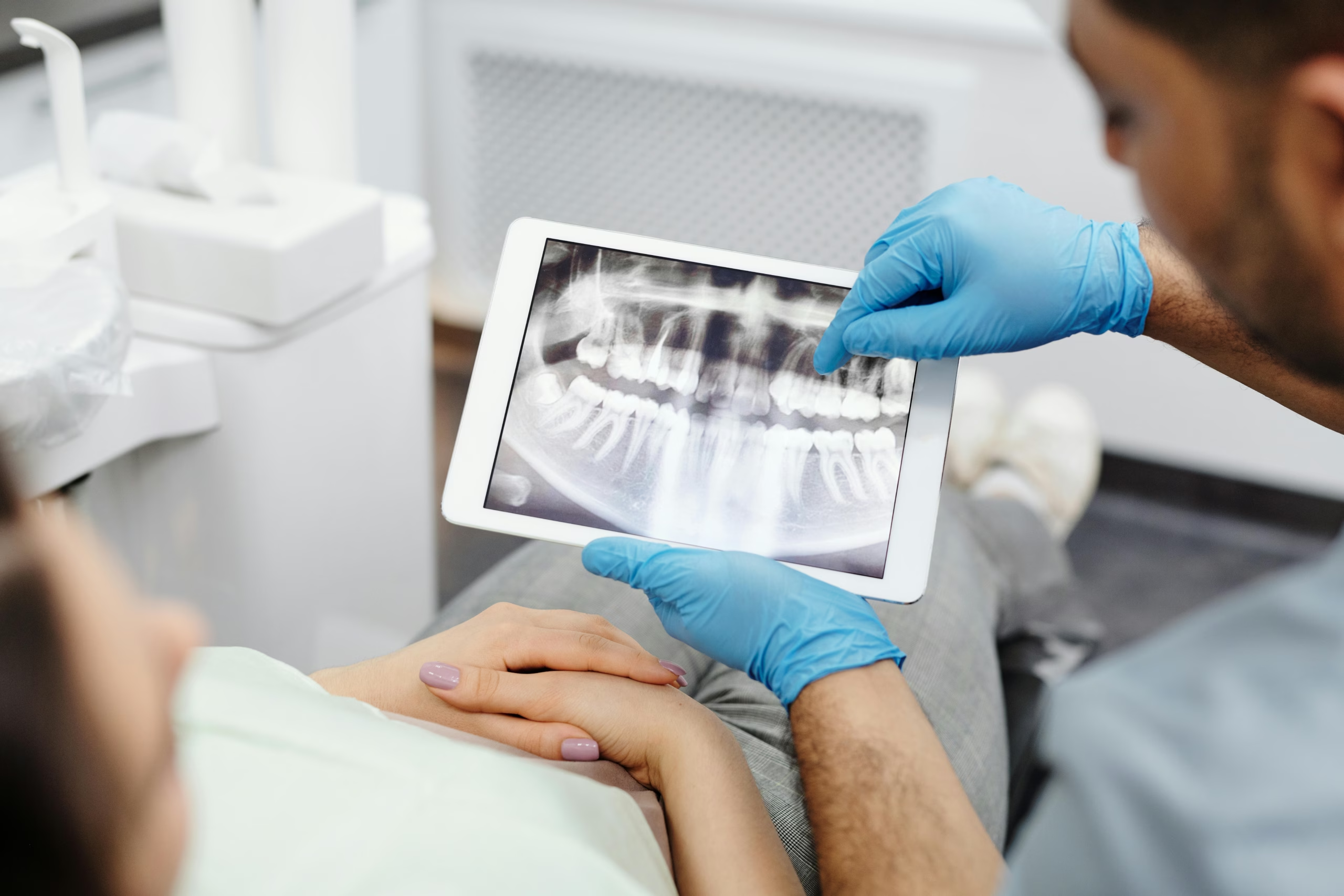How to Prevent Oral Thrush: Tips to Keep Your Mouth Healthy
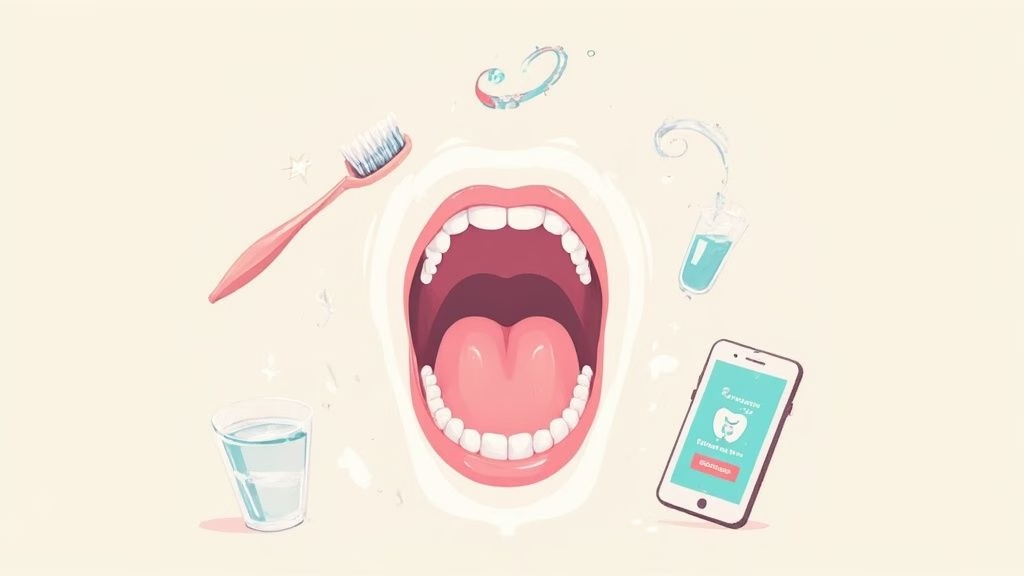
Before we can talk about preventing oral thrush, it’s important to get a handle on what it actually is and who’s most likely to get it. At its core, it’s a fungal infection caused by an overgrowth of a yeast called Candida, which, believe it or not, lives in all our mouths quite happily most of the time. The first step to building a solid defence is knowing your own personal risk factors.
What Is Oral Thrush and Am I at Risk?
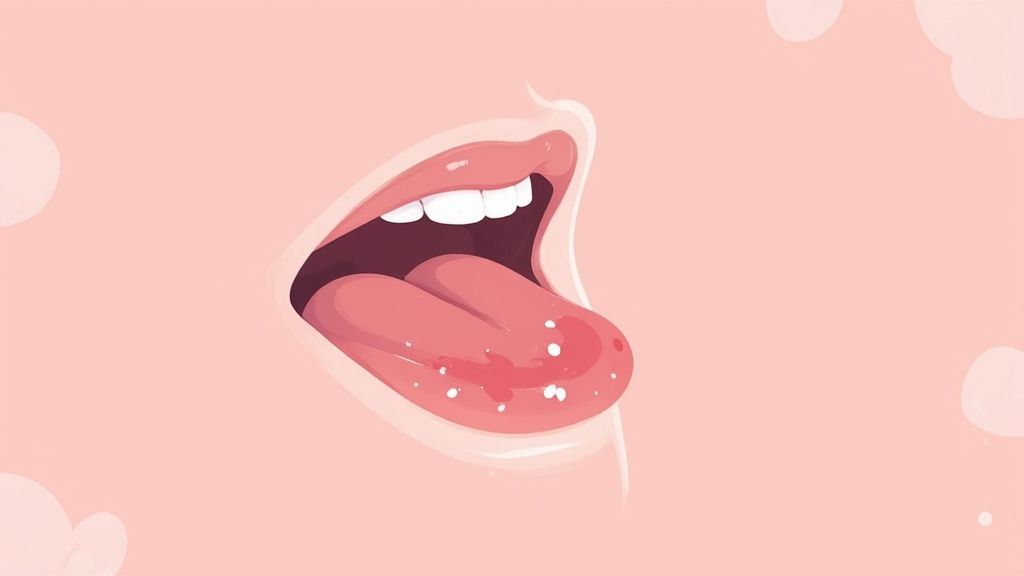
Oral thrush, or oral candidiasis as it’s known clinically, pops up when the delicate balance of microbes in your mouth gets knocked out of kilter. Usually, your immune system and the ‘good’ bacteria in your body keep Candida levels under control. But when something disrupts that balance, the fungus can grow out of control, leading to those tell-tale signs of thrush.
Most people notice symptoms like:
- Creamy white spots or patches on the tongue, inner cheeks, gums, or tonsils.
- A strange, cottony feeling in the mouth.
- Redness, soreness, or even a burning sensation that makes eating and swallowing uncomfortable.
- A loss of taste or a persistent unpleasant taste.
While anyone can technically get oral thrush, some people are far more vulnerable. Understanding if you fall into a high-risk group is key, as it means you may need to be extra careful with your oral health routine.
Key Groups at Higher Risk
Some of us are just more prone to developing this condition. For instance, oral thrush is incredibly common among UK infants, with rates jumping from 5% in newborns to 14% by just the fourth week of life. In healthy adults, it’s much rarer unless other risk factors come into play. For older adults, particularly those who wear dentures, the incidence can shoot up to as high as 10%.
Oral thrush is what we call an opportunistic infection. It basically waits for a moment when your body’s natural defences are down, creating the perfect environment for Candida to flourish.
Other major risk factors include anything that weakens your immune system, like conditions such as HIV or treatments like chemotherapy. People with unmanaged diabetes are also at greater risk because high blood sugar levels can feed the yeast, helping it grow. To get a fuller picture, you can read up on the common causes of thrush and effective prevention strategies.
Recognising if you’re at risk is the first step towards being proactive. If you do fall into one of these categories, modern dental tech can be a huge help. Getting a quick consultation through an app like Toothfairy can give you immediate, professional advice at the first sign of trouble, helping you get on top of the issue before it gets worse.
Mastering Your Daily Oral Hygiene Routine
Your first line of defence against a Candida overgrowth is, without a doubt, a solid daily oral care routine. This is about more than just a quick brush morning and night; the specific tools you use and how you use them can make all the difference in keeping oral thrush at bay.
Think of it this way: you’re not just cleaning your teeth. You’re actively removing the food particles and plaque that the Candida fungus loves to feast on. If you let that build up, you’re essentially creating the perfect environment for yeast to multiply and cause an infection.
The Fundamentals of a Thrush-Proof Routine
Your toothbrush is obviously your main tool, but are you using it correctly? I always recommend a soft-bristled brush. Anything harder can irritate your gums, creating tiny cuts where fungi can take hold. Make sure you’re brushing for a full two minutes, twice a day, and getting into every nook and cranny.
But your teeth are only half the battle. Your tongue, with all its little bumps and grooves, is a major hiding place for Candida. A quick scrape once a day, either with a proper tongue scraper or even just the back of your toothbrush, can seriously reduce the amount of fungus in your mouth.
The goal isn’t just to have clean teeth; it’s to disrupt the entire ecosystem where Candida can thrive. A full routine that includes your tongue and the gaps between your teeth is absolutely essential for effective prevention.
And that brings me to flossing. You have to clean between your teeth daily, whether with traditional floss or interdental brushes. These tools get into the tight spots where your toothbrush can’t reach, clearing out trapped debris that fuels fungal growth.
The infographic below really drives home how much more effective a complete routine is.
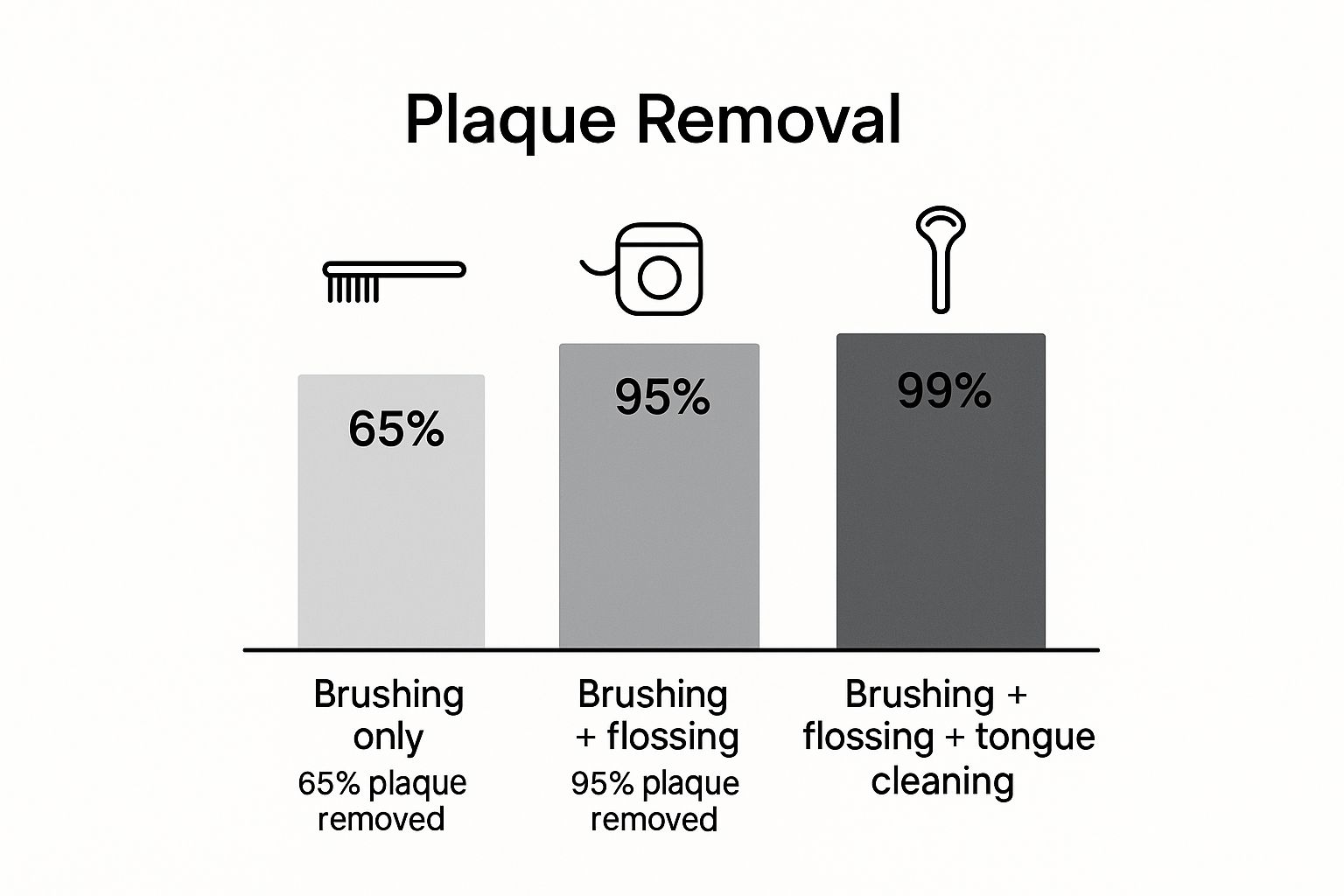
As you can see, simply adding flossing and tongue cleaning to your brushing routine removes nearly all plaque. When there’s nothing for the fungus to feed on, it can’t overgrow.
Oral Hygiene During Orthodontic Treatment
Keeping your mouth perfectly clean becomes a lot trickier when you’re straightening your teeth. Traditional fixed metal braces create countless little hideouts for plaque and food, which can easily raise your risk of developing thrush.
This is one area where modern orthodontics really shines. Unlike fixed braces, clear aligners from Toothfairy are completely removable. You can simply take them out to brush and floss properly, cleaning your teeth and gums without anything getting in the way. It makes maintaining excellent oral health during your treatment journey so much easier.
We can’t overstate how crucial thorough oral care is, especially for more vulnerable people. A striking 2015 hospital audit found that only 15% of adult inpatients were given a basic mouth care assessment. This highlights a real gap in care that can lead directly to infections like oral thrush in high-risk groups. You can read more about these important findings in the official guide on mouth care assessments from the NHS.
How Your Diet and Lifestyle Affect Oral Health

While a solid brushing and flossing routine is your first line of defence, it’s only half the story. What you eat and how you live have a massive impact on the delicate ecosystem inside your mouth. You can either create an environment where Candida thrives or one where it simply can’t get a foothold.
The link between your diet and oral thrush is incredibly direct. Sugary foods and drinks are Candida’s favourite fuel. When you consume a lot of sugar, you’re essentially laying out a feast for this yeast, encouraging it to multiply and potentially spiral into a full-blown infection.
This doesn’t mean you have to give up every treat you enjoy, but being mindful of your intake is crucial. Simple swaps can make a surprising difference—think switching from a sugary breakfast cereal to whole-grain oats or choosing water over a fizzy drink. These small changes drastically reduce the fuel available for yeast to grow.
Foods to Limit and Foods to Favour for Thrush Prevention
Choosing the right foods can feel overwhelming, but it boils down to starving the bad bacteria and feeding the good. This table breaks down what to be mindful of and what to load up on to keep your oral microbiome balanced and happy.
| Food/Drink Category | Foods to Limit (High in Sugar/Yeast) | Foods to Favour (Low in Sugar, Probiotic-rich) |
|---|---|---|
| Sweeteners | White sugar, high-fructose corn syrup, honey, maple syrup | Stevia, xylitol, erythritol (in moderation) |
| Beverages | Fizzy drinks, fruit juices, sweetened coffees/teas, alcohol | Water, herbal teas (unsweetened), green tea |
| Grains | White bread, pastries, white pasta, most processed cereals | Wholegrains (oats, quinoa), brown rice, sourdough bread |
| Dairy | Sweetened yoghurts, flavoured milks, ice cream | Plain, unsweetened live yoghurt, kefir, aged cheeses |
| Fruits & Veg | High-sugar fruits (grapes, mangoes), dried fruit, starchy veg (potatoes) | Low-sugar fruits (berries), leafy greens, broccoli, garlic |
Focusing on a diet rich in whole, unprocessed foods doesn’t just help prevent thrush; it supports your overall health from the inside out.
Bolstering Your Body’s Natural Defences
Your diet isn’t just about starving the fungus; it’s also about actively strengthening your body’s ability to fight back. A balanced diet packed with vitamins and minerals gives your immune system the tools it needs to keep Candida under control naturally.
Here are a few habits to build into your daily routine:
- Embrace whole foods: Prioritise lean proteins, fresh vegetables, and healthy fats. They support your body without feeding the yeast.
- Bring in probiotics: Plain, unsweetened yoghurt and fermented foods like kefir introduce beneficial bacteria that compete with Candida.
- Stay hydrated with water: A dry mouth is a perfect breeding ground for thrush. Drinking plenty of water helps maintain a healthy saliva flow and washes away lingering food particles.
Even your choice of hot drink can play a role. For instance, you could explore the health benefits of chai tea as an alternative to sugary lattes. It’s about thinking holistically about what you’re consuming.
Your mouth is a direct reflection of your overall health. A diet that fuels your body correctly will also create an oral environment that is naturally resistant to infections like thrush.
Lifestyle Habits That Can Tip the Scales
Beyond diet, certain lifestyle factors can give Candida an advantage. Smoking is a huge one. It irritates the delicate lining of your mouth and throws the natural balance of microorganisms out of whack, making it much easier for an infection to take hold.
Quitting smoking is one of the best things you can do for both your oral and general health. Likewise, getting a handle on stress is key. High cortisol levels can weaken your immune response, leaving you far more vulnerable to opportunistic infections like thrush. Making these small but consistent adjustments creates a powerful, long-term defence.
Juggling Medications and Your Health
Sometimes, it’s not your oral hygiene or diet that’s the main culprit behind oral thrush. The real story often lies in the connection between your mouth and your overall health. Certain medications and underlying health issues can throw your mouth’s natural ecosystem off-kilter, giving Candida the perfect chance to take over.
Getting a handle on this link is the first step. The idea isn’t to be worried, but to be prepared. It’s about knowing which treatments need a bit of extra attention and what simple, preventative habits you can adopt. This way, you can have a more informed chat with your GP or dentist and work together on a plan that covers all bases.
Inhaled Corticosteroids and Asthma Care
If you use an inhaler for asthma or COPD, you’ll know how vital those corticosteroids are. They’re brilliant for your lungs, but they can be a bit of a troublemaker for your mouth. When tiny particles of the steroid medication hang around in your mouth and throat after a puff, they can pave the way for thrush.
The good news? This is one of the easiest side effects to manage. In the UK, poor inhaler technique is a well-known risk factor, with some studies showing oral thrush in up to 60% of patients. To get around this, official NHS clinical guidance on oral candidiasis points to a few simple habits.
You can dramatically cut your risk by making these part of your routine:
- Rinse right away: As soon as you’ve used your inhaler, have a good swish and spit with water. This washes away any lingering medication.
- Brush if you can: If it’s a convenient time of day, brushing your teeth after your dose is even more effective.
- Ask about a spacer: This clever device attaches to your inhaler, helping the medicine go straight to your lungs instead of settling in your mouth.
A quick but important note: never stop or change your prescribed medication without speaking to your doctor first. The goal is to add these protective steps into your routine, not to mess with your treatment.
The Knock-On Effect of Antibiotics and Other Conditions
Antibiotics are another common trigger. They’re fantastic at wiping out nasty bacteria causing an infection, but they’re not very selective. They often take out the friendly bacteria in your mouth that naturally keep Candida levels under control. Once that defence is down, the yeast can flourish.
If you’ve been prescribed a course of antibiotics, you can get ahead of the game. Think about adding a probiotic supplement or some plain, unsweetened yoghurt to your diet to help build back your good bacteria. Of course, always finish your full course of antibiotics as directed, but just keep a closer eye on your oral health while you do.
It’s a similar story for conditions like diabetes. When blood sugar isn’t well-managed, the high sugar levels create a sweet environment in your saliva—which is basically a feast for yeast. Keeping your blood sugar stable through your diet, exercise, and medication is one of the best things you can do to prevent thrush if you have diabetes.
If you spot the early signs of thrush while taking a new medication or managing a health condition, don’t just wait and see. Getting professional advice quickly is key. With the Toothfairy app, a smarter and more affordable way to access care, you can book an emergency consultation with a qualified dentist right from your sofa, getting the expert guidance you need without the wait.
Looking After Infants and Denture Wearers
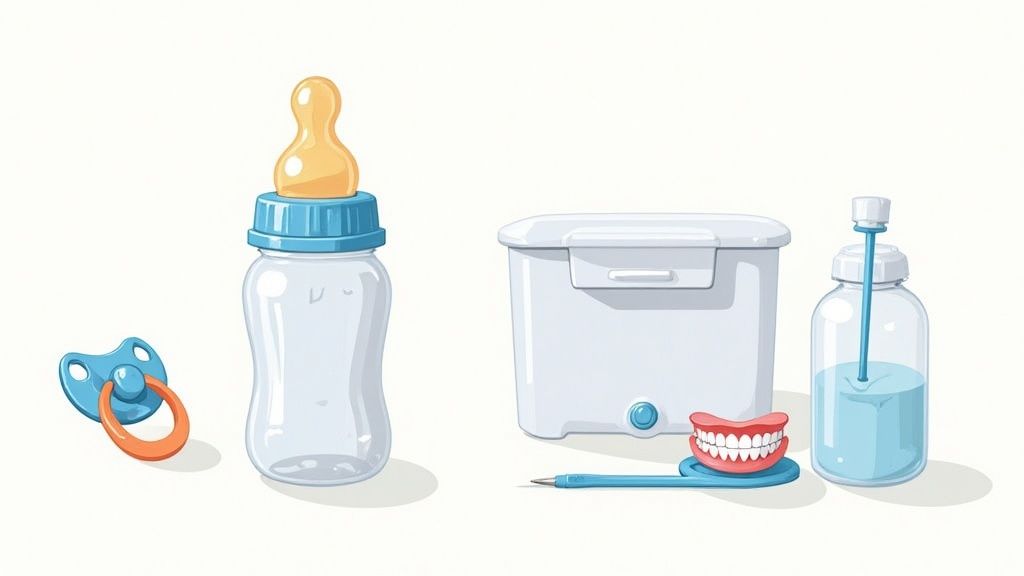
Some people are simply more prone to oral thrush, and a few extra steps in their daily routine can make a world of difference. Two groups that need this specialised attention are infants, whose immune systems are still developing, and those who wear dentures, as the appliance can unfortunately become a breeding ground for yeast.
The good news? Preventing a Candida flare-up in these situations often boils down to simple, consistent habits. For both parents and denture wearers, it’s about focusing on hygiene that extends beyond just brushing. It’s all about creating an environment where the fungus can’t gain a foothold.
How to Protect Your Baby from Oral Thrush
A baby’s mouth is a delicate ecosystem, and it’s surprisingly easy to disrupt its natural balance. If you bottle-feed, meticulous hygiene is an absolute must. That means sterilising all bottles, teats, and dummies after every single use to get rid of any yeast that might be hanging around. It seems like a small task, but it plays a massive part in keeping your baby’s mouth healthy.
If you’re breastfeeding, it’s important to remember that thrush can be passed between you and your baby. The NHS advises treating any signs of nipple thrush immediately to stop the infection from being passed back and forth during feeds. Being diligent with hygiene is crucial for you both. For more details, check out these essential tips for oral thrush prevention from Chemist 4 U.
Keeping everything that goes into your baby’s mouth scrupulously clean is the cornerstone of prevention. Think of it as creating a protective barrier against Candida overgrowth during these vulnerable early months.
Essential Denture Care to Avoid Thrush
If you wear dentures, your risk of developing thrush is higher, especially if your cleaning routine isn’t quite up to scratch. Dentures can easily trap tiny food particles and moisture against your gums, creating the exact kind of warm, dark place that yeast loves to grow in.
A simple daily routine is your best defence. Here’s what you need to do:
- Take them out at night: Always remove your dentures before going to sleep. This gives your mouth and gums a much-needed break, allowing them to rest and recover.
- Clean them the right way: Give your dentures a gentle but thorough clean every day. Use a soft-bristled brush and a proper denture cleaner, as regular toothpaste can be too abrasive and create tiny scratches where fungi can hide.
- Soak them overnight: After cleaning, let them soak in a specialised denture solution overnight. This will help kill off any lingering yeast and bacteria.
- Check the fit: Ill-fitting dentures can rub against your gums, causing sores and inflammation that make you more susceptible to infection. If your dentures feel loose or uncomfortable, it’s probably time to get them adjusted. Modern cosmetic options, like those available through Toothfairy, can help you find a more secure and comfortable solution.
When to Get Professional Dental Advice
Even when you’re doing everything right at home, oral thrush can sometimes be incredibly stubborn. While prevention is always the best approach, you have to know when to wave the white flag and call in a professional. If a fungal infection isn’t clearing up or keeps making a comeback, it’s a clear signal that it’s time to speak with a dentist or your GP.
Sometimes, persistent oral thrush can be a red flag for a bigger health issue that needs looking into. It might be the first sign that a condition like diabetes isn’t under control, or that a medication you’re taking needs to be adjusted. If you ignore a recurring infection, you could be overlooking the real root of the problem.
Knowing When It’s Time for a Professional
It’s crucial to understand when home remedies just aren’t cutting it. Let’s say you’ve been on top of your oral hygiene, you’ve tweaked your diet, but you’re still seeing those classic white patches after a week or two. That’s your cue to get an expert opinion. A professional can give you a proper diagnosis and make sure it isn’t something else.
You should definitely seek professional help if you’re experiencing:
- No improvement: Your thrush isn’t getting any better within 7-10 days of dedicated home care.
- Recurring infections: The thrush clears up only to return a short while later, again and again.
- Pain or difficulty swallowing: The infection has become painful, making it genuinely hard to eat or drink.
- Signs of a wider infection: You’ve developed a fever or just feel generally unwell along with the symptoms in your mouth.
Think of your dentist or GP as a partner in your health. When your own efforts aren’t enough, they have the tools and prescription treatments, like antifungal medications, to not only clear the infection but also to help you figure out why it happened in the first place.
A Modern Way to Get Immediate Advice
When you’re in this situation, getting fast access to a professional is what matters most. Trying to book a traditional dental or GP appointment can mean long waits, which is the last thing you want when you’re dealing with discomfort. This is where new approaches to dental care can make a huge difference.
Waiting around for an appointment doesn’t have to be your only choice. For those times you need answers fast, the Toothfairy app provides a smarter, more affordable way to connect with a qualified UK dentist. You can often book an emergency consultation for the very same day, all from your own home.
A dentist can assess your symptoms over a secure video call, offer a professional diagnosis, and send a prescription for any necessary medication straight to your local pharmacy. It cuts out the stress and the delay, giving you the power to act decisively when you need expert help. This kind of immediate access means you can tackle the problem head-on without the usual wait.
For fast, affordable access to professional dental advice for emergencies, cosmetic work, or straightening your teeth with clear aligners, download the Toothfairy app today. Visit https://www.toothfairyapp.co.uk to get started.
Last updated on October 21, 2025

Toothfairy Care Team
Toothfairy, is the world's smartest dental app, that connects patients to a dentist for a range of issues, from emergencies, cosmetics, prescriptions to virtual exams.
Toothfairy Care Team
Toothfairy, is the world's smartest dental app, that connects patients to a dentist for a range of issues, from emergencies, cosmetics, prescriptions to virtual exams.



